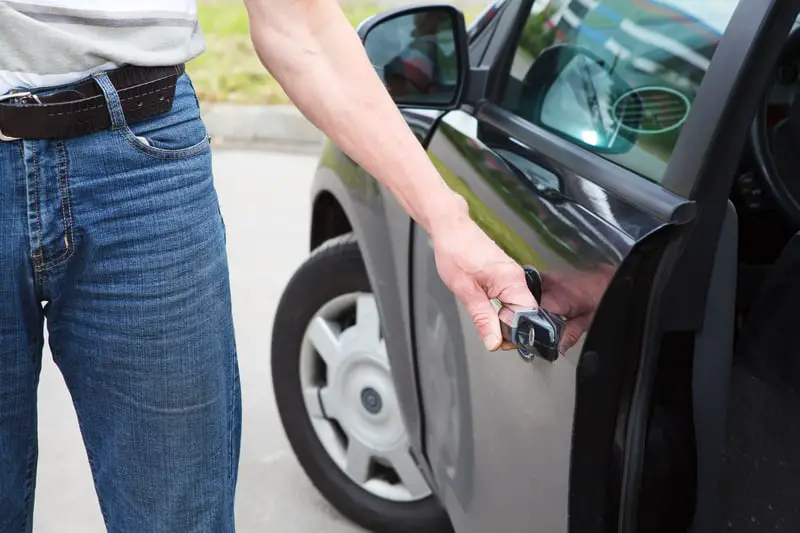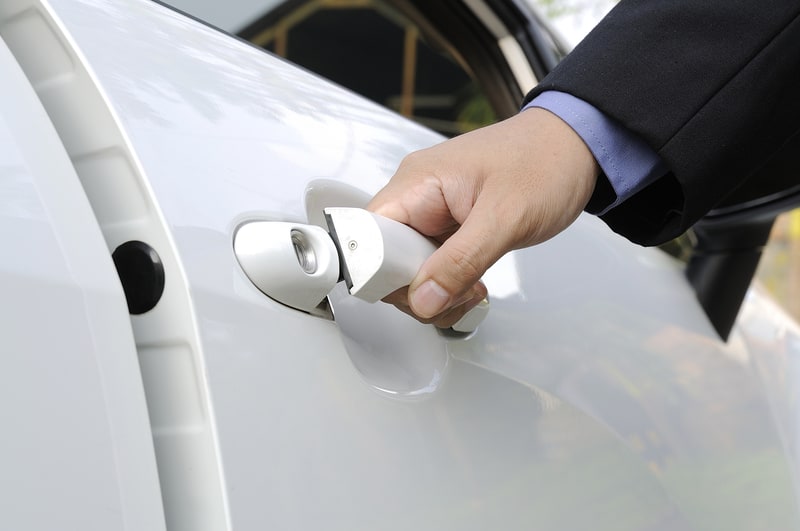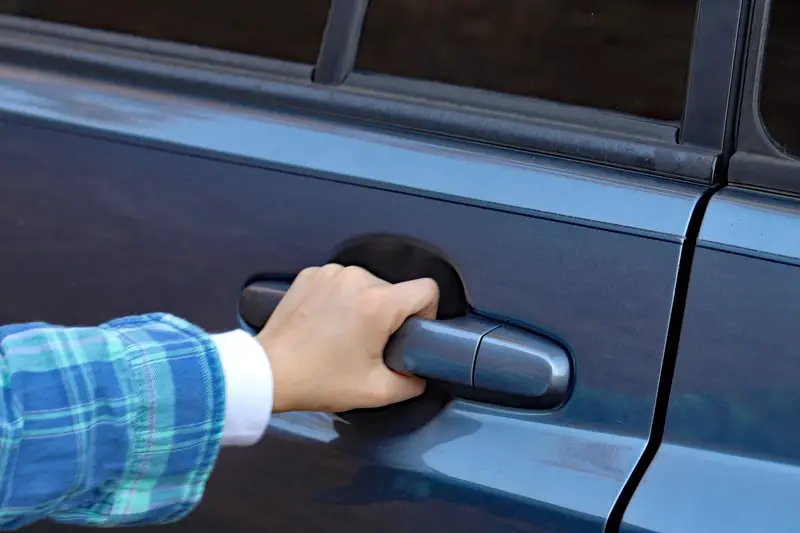
Modern car safety systems have evolved over the years and started with the development of the vehicle safety cell and airbags. Modern cars also have more advanced systems, including proactive warnings for forward collision, lane departure, rear cross traffic, blind spot, and doors that lock automatically.
Most modern cars are fitted with automatic door-locking systems. While there are some downsides, particularly relating to children and pets who are left in hot cars, these systems have proven to reduce injury in car accidents and contribute to safety relating to car theft and hijackings.
There will always be outlying cases that skeptics can point at to “prove” that locked car doors are dangerous to the occupants. The reality is that they form part of the vehicle’s overall safety systems that work together and collectively give the occupants the best chance of survival.
Most Modern Car Doors Automatically Lock
Irrespective of price, automatic locking doors are becoming more commonly installed as standard features in most new cars. The benefits relate to occupant security from criminal activity as well as improved safety in the event of a car accident.
Is It Safer To Drive With Locked Or Unlocked Doors?

While no legislation requires drivers to ensure the car doors are locked, the general consensus is that it is safer to drive with the doors locked.
Benefits Of Car Doors Automatically Locking
There are several benefits to having an automatic door-locking feature in a car.
1. Prevent Unintended Door Opening
An automatic door locking system, particularly one where child locks can be activated, is useful in preventing a child (or adult!) from opening the door while the vehicle is moving.
2. Helps Prevent Car Hijacking
A common tactic (not the only one) of hijackers is to quickly yank the car doors opening, which creates a shock effect on the passengers. With the initiative, the hijackers can more easily control the situation, particularly if they are branding a weapon.
Vehicles being driven with the automatic door locking enabled gives the Driver a small margin of time to act, hopefully by driving off.
3. Makes Car Theft More Difficult (Under Some Circumstances)
Automatic car doors are a double-edged sword when it comes to car theft.
A locked door may deter an opportunistic thief wanting to steal the contents lying loosely inside without drawing attention by breaking a window.
On the other hand, some sophisticated electronics enable some criminal gangs to clone a car remote and use it to unlock the doors and drive off. In this instance, an old metal key in the door provides more security.
4. Additional Restraint Protection If Car Is In An Accident
Cars with side-impact airbags and side-impact bars in the doors are only effective if the doors remain shut during an accident.
Locked doors during the accident sequence provide an additional level of protection by preventing the doors from swinging open and exposing the occupants to injury.
Dangers Of Car Doors Automatically Locking

There are some instances when automatic locking car doors are inconvenient or even represent a serious danger.
1. A Child Or Animal Being Deliberately Left In A Car
The primary danger introduced by doors that lock automatically is that a child (compromised adult) or animal may be trapped inside a hot car and exposed to injury from heat (possibly heatstroke.)
Almost 30% of child heatstroke deaths occur when an unsupervised child can access a vehicle.
The problem has become so big in America that the National Highway Traffic Safety Administration has rolled out a $2 million information program warning parents of the danger.
Instances include:
- The Driver quickly “rushes” into a store and leaves their child, or animal, in the car; afterward, they get distracted and fail to return quickly enough.
- An owner leaves the car door open (which will remain unlocked while open), and a child enters to play and closes the door, which activates the auto-locking feature, leaving the child trapped.
2. Keys Get Locked Inside
It is said that there are two kinds of drivers, those who have inadvertently locked their car keys inside a car and those who will one day lock their keys in a car!
A car with auto-locking doors makes this scenario a very real possibility.
Most systems have a timer, which activates once all doors are closed, and once the time is up, the system locks all doors.
If the keys are inadvertently left in the car, they will also be locked in. The problem is overcome in cars with keyless entry because as long as the key fob is inside the car and, the engine is not moving, the doors won’t lock.
What Does The Law Say?
No legislation dictates that the car door must be locked (or unlocked) while the vehicle is in motion.
The National Highway Traffic Safety Administration has a safety test that is conducted on new cars.
The New Car Assessment Program (NCAP) is intended to score vehicle manufacturers’ products by awarding up to five stars. A single star is awarded to very dangerous vehicles, while five stars are given to fully compliant ones.
The rating system is intended to give consumers enough information regarding the protection a car provides in a crash or rollover safety of new vehicles.
Vehicles achieving scores of three stars or less are considered to have major safety deficiencies.
NCAP presently uses three measurements to assess vehicle safety:
- Adult Driver and passenger Protection
- Child Passenger Protection
- Road User (VRU) protection
In 2022 The National Highway Traffic Safety Administration (NTSA) advised that new regulations will be introduced to provide a score for the amount of Pedestrian Protection, including cyclists, the vehicles provide.
Automatic Car Locking Doors
There is no legislation requiring car doors to have an automatic door-locking feature or even for drives to ensure that car doors are locked while traveling.
Having said this, automatic door locks improve safety, and the NCAP tests the function of automatic door locks.
In cars where the door locks automatically activate once the vehicle has reached a certain speed, they are required to unlock automatically in an accident (the trigger generally being the airbags activating).
While the locking mechanism may offer more security and prevents a door from opening in an accident, the system must unlock to allow the occupants of the vehicles to leave it and to enable emergency workers to access to provide any assistance necessary.
Once the accident sequence is finished and the door locks have automatically unlocked, the door should be able to be opened using a force of fewer than 750 Newtons.
Conclusion
Most modern cars have systems that lock the doors automatically. These provide an added layer of safety during car accidents and act as a deterrent to opportunistic thieves.
The downside is that if children or animals are in the car when a system activates, there is a risk they will be trapped and may suffer from heatstroke.
